BIKE PACKING GEAR ESSENTIALS – MY SET UP
Paul Lyons
November 30, 2025
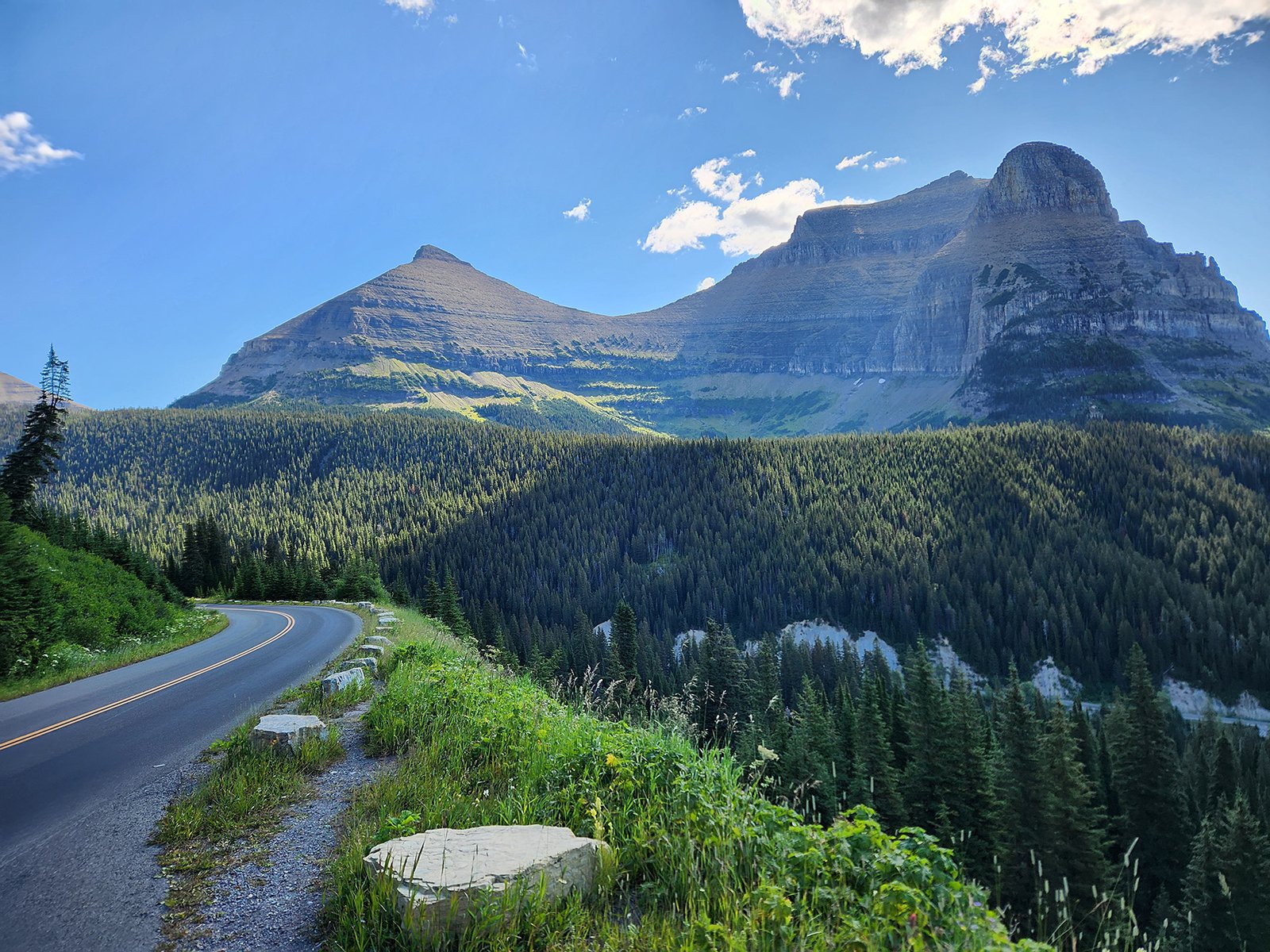
Bike Touring/Packing
It is entirely possible to go bike packing, riding to campgrounds and maybe benevolent friend’s houses – perhaps hotels, with the bike and camping gear that you have in your basement. Bike packing is essentially a type of touring. It’s easy to marvel at how John Muir walked with just a bed roll, a loaf of bread, some tea and a sierra cup all the way from San Francisco to Yosemite. Not too long ago, if you wanted to get somewhere, you walked. It was not until the late-nineteenth century and the invention of the bicycle that there were any other options.

In the twenty-first century bike packing is a good way to simply ride away from the madness of the world, get some fresh air and see the countryside. Beware though – it can become addicting.
Recommended Gear
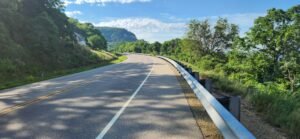
I started doing multi-day bicycle rides in 2020 during the pandemic. My first one was 300 miles from Minneapolis to Madison, Wisconsin. I really had no idea of how far I could ride, or what I was even doing. I had done a few trips when in my twenties but these were ill-conceived ventures that were usually not repeated. I remember thinking that the weight of the gear did not matter. You just bungeed everything on your ten-speed rear rack and off you went. I now know better. Paying attention to your gear, your pack weight and carefully packing stuff is essential. It is not unlike when you backpack and are going to be far from any stores for days on end. Of course, part of the fun is improvising solutions and fixes along the way. The good thing about getting your gear down is that if you also backpack, you are set. Additionally, when the next natural disaster hits, you are better prepared.
OK Paul, Just Cut to the Chase
To bike pack all you really need is a bike, some water bottles, a tire repair kit, your wallet and a functioning credit card and you are good to go. Assuming you have a good rear rack, the first thing I would buy is rear Ortlieb panniers. You do have to put your stuff somewhere.
For those, who just want a list of essential items and a few just plain “cool to have” items in the year 2025, download and print out my checklist. Bike Touring/Packing Checklist (printable pdf).
Distances
Food
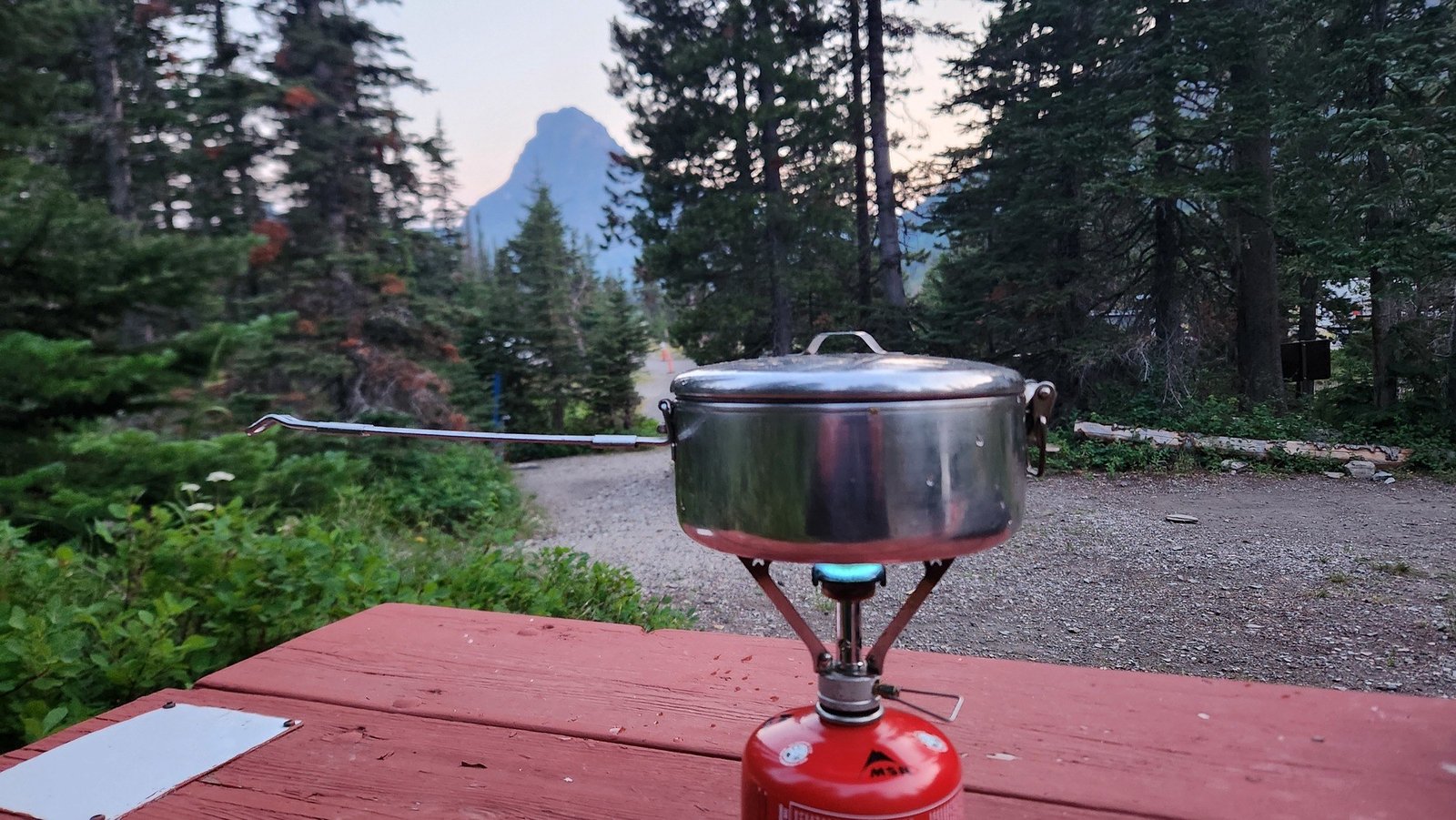
One of the things about bike packing (for when you know you will be by civilization) is that you do not need to pack a lot of food. I have a basic set up that I bring so that if for some reason I cannot buy food, I will not go to sleep hungry. Your preferences will vary. Instant oatmeal and a lightweight freeze- dried dinner of some kind makes sense. Macaroni and cheese will do. I always bring apples and carrots.
Out on the road, I came to the realization that most of your food options are often just poison. The food they sell at gas stations is mostly poison. Local pharmacies. Poison. Most of rural America is one vast food desert.
When you ride 70 miles a day, the food you eat is your fuel so eat real food. When I am out on the road, I have a rule that if I go by a farm stand, any farm stand, I always stop and buy something. A fresh zucchini. A few pieces of fruit. I am a big fan of green beans as they have a long pack life and cook up in a flash. A cucumber. Basically anything that is fresh is going to be tasty and you will have the opportunity to talk to the people who grow the food. For this reason I bring a lightweight stuff-sack with little plastic bottles that I bought at Tap Plastics. I fill the little bottles with spices. Do not forget salt and pepper. Little packets of condiments that you pick up along the ride at restaurants work well too.




Clothes

Bike Touring/Packing Checklist
Bike Touring/Packing Checklist (printable pdf)
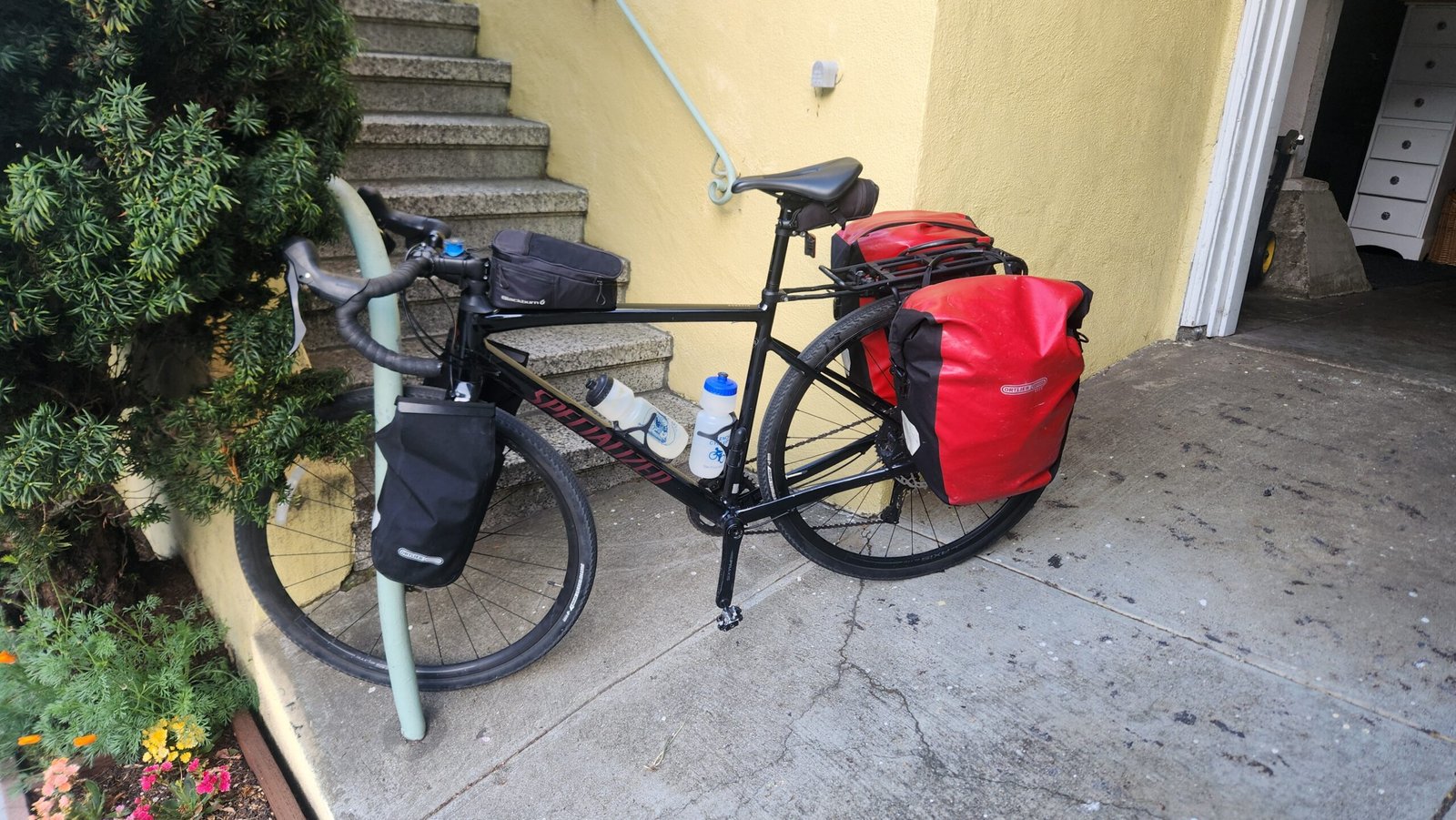
My Gear
- Specialized Diverge Gravel Bike
- 2 rear panniers – Ortlieb Sport Roller Core – 14.5L
- 2 front panniers – Ortlieb Fork Pack
- Top pipe pannier – Blackburn Outpost Top Tube Bag
Everyone has their preferences. Some like to pull a trailer. My bike is a 2019 Specialized Diverge Gravel Bike that was $2500 that I luckily was able to buy, a bit unknowingly, during the pandemic. It is a great bike and perfect for bike packing. Oversized tires. 11 speeds. Rides like a sports car. Rides great on trails. Ortlieb panniers are the way to go. Waterproof and indestructible. Your grandkids may end up using them. I like the Core model as I bring a common strap and can use then as a bag for when you are not riding.
- Front light
- Rear light
- Helmet
- Gloves
- Pump
- Repair kit and tube. Chain tool, Tire adapters and Allen wrenches
- 2 water bottles
- Charge stick for when you need to charge up phone away from outlets
- Bike lock and cable (I am a city person. I always lock my bike. Even in the woods.)
- Bungee cord
- Strap for pannier
- Various stuff sacks to keep organized. I put all socks and underwear in separate little stuff sacks. Makes it easy.
Sleeping
- Tent – Nemo Hornet OSMO Ultralight 2P Tent
- Pad – Nemo Quasar 3D Insulated Air Sleeping Pad
- Sleeping bag – Lightweight
- Inflatable pillow – Aeros Premium Pillow
- Head lantern
On my first trips I used just a bivy sack as a tent and I had a Thermarest mattress. This was roughing it, but it did work. I kept my eyes out for the sales and got the Nemo Hornet OSMO Ultralight 2P Tent and was really glad I did. This is a great 2 pound tent that packs up small. I have weathered major storms in this thing. My latest purchase is a Nemo 3.5 inch sleeping pad. Time to live it up! The Aeros Premium Pillow at first was difficult to get use to, but now I love the thing and is very versatile.
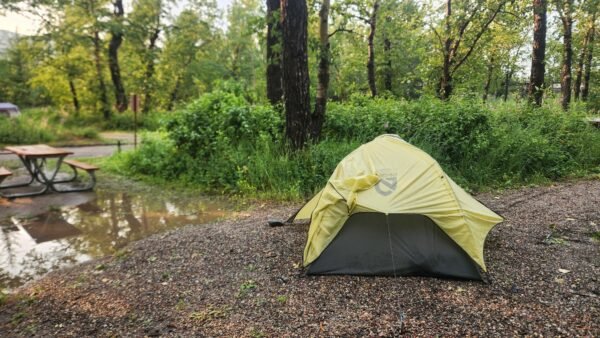
Cooking
- Stove MSR PocketRocket® 2 Stove
- Fuel
- Small cook pot
- Mug
- Fork
- Spoon
- Tea (I just buy coffee on the road when needed)
- Spice bag
- Cleaning sponge and dish soap
My MSR stove is pretty old and definitely less than $50. These are lightweight and work great. The fuel is sometimes hard to find out in the boonies so plan accordingly.
Starter Food
- 4 oatmeal
- Trail mix
- Dried fruit
- 2 real apples
- Energy bars
- 1st day food.
Clothes
- Bike jerseys (2)
- Bike pants
- Bike shoes
- Wool hat and scarf
- Hiking pants/shorts
- Socks (4 riding, 2 comfy)
- Gloves
- Underwear
- Long underwear
- Down jacket (puffy jacket)
- Bandanas
- 2 t-shirts
- 1 short sleeve shirt
- 3 underwear
Extra bike clothes
- Bike rain jacket
- Cap
- Slippers
- Toiletries
- Arm and leg extensions
Miscellaneous Items
- Clothes line
- 2 clothes pins
- Matches & lighter
- bungee cord
- swiss army knife
- Toiletries (5 Band-Aids and antibiotic ointment)
- ear plugs and eye mask
- towel
- extra-large stuff sack (If you travel by Amtrak train ever, having a large stuff sack to just put everything in is Important. It makes it so you do not lose stuff when boarding the train.
Conclusion
Bike Touring/Packing Checklist (printable pdf).
“You pack your fears. If you are afraid of being thirsty, you carry too much water. If you fear hunger, you pack too much food. If you are afraid of being cold, you pack too many clothes.”
Hiker on the Pacific Crest Trail
Below is all that I bring besides my food, clothes and a few harmonicas. Enjoy the ride.






